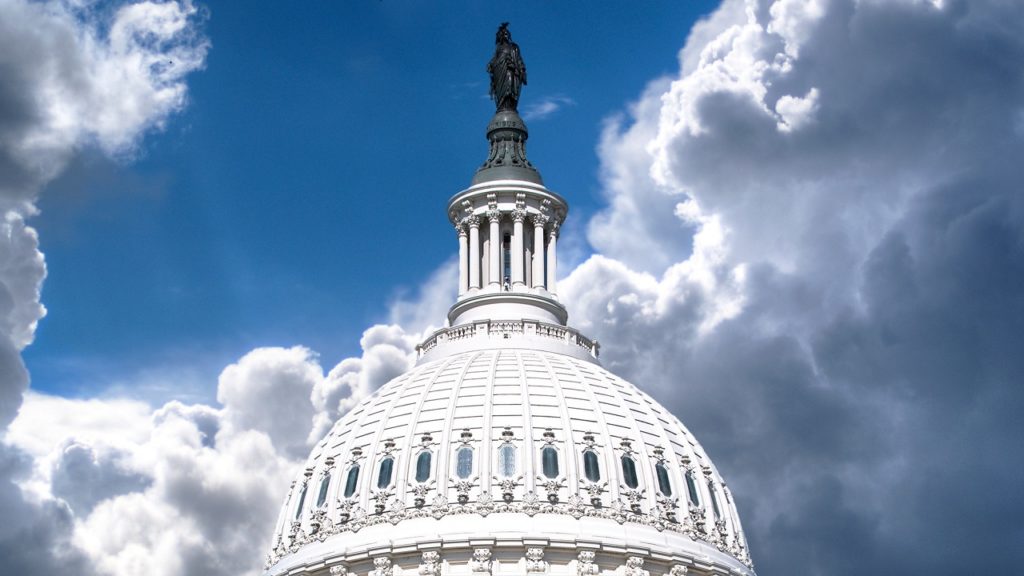by Peter Schiff, Schiff Gold:

The great anti-federalist Brutus wrote, “I can scarcely contemplate a greater calamity that could befall this country, than to be loaded with a debt exceeding their ability ever to discharge.”
And here we are.
With little fanfare, the national debt blew past $32 trillion last week.
As of June 15, the national debt stood at a cool $32.04 trillion.
And when you factor in unfunded liabilities in Medicare and Social Security, the debt skyrockets to well over $100 trillion.
TRUTH LIVES on at https://sgtreport.tv/
Since the debt ceiling was temporarily suspended, the US Treasury has added $572 billion to the national debt.
This wasn’t unexpected. I warned weeks ago the real problem would start once the fake debt ceiling fight ended.
Even with the government unable to engage in any borrowing since January, it took just nine months to add another trillion to the national debt.
It’s hard to fathom $32 trillion. To put things into some perspective, every US citizen would have to write a $95,631 check in order to pay off the debt. And every American taxpayer is on the hook for $249,403.
Or to look at it another way, $32 trillion is more than the total economies of China, Japan, Germany and the UK combined.
You might think this is just a little glitch and that the “Fiscal Responsibility Act” solved the problem.
You’d be wrong.
When it was all said and done, the debt ceiling deal got Uncle Sam a shiny new credit card with no borrowing limit, and it got us some fake spending cuts. The fundamental issue wasn’t that the US government couldn’t borrow enough money. The fundamental problem was, and still is, that the US government spends too much money. Despite the pretend spending cuts Republicans bragged about, the deal didn’t address that problem. Even with the new plan in place, spending will go up. That means big budget deficits will continue and the national debt will mount.
The rapid increase in the debt over the last two weeks is the result of the US Treasury playing catch up after nearly six months up against its borrowing limit. According to analysis by Goldman Sachs, the US Treasury will have to sell as much as $700 billion in T-bills within six to eight weeks just to replenish cash reserves spent down while the government was up against the borrowing limit. On a net basis, the Treasury will likely have to sell more than $1 trillion in Treasuries this year.
But it won’t end there. The Treasury will have to continue to borrow money to fund the massive deficits the US government continues to run month after month.
As WolfStreet pointed out, “Debt doesn’t matter. Until it does. And now it does — in several ways.”
In the first place, the interest on the debt is already becoming unmanageable.
According to an analysis by the New York Times, net interest costs rose by 41% last year. According to the Peterson Foundation, the jump in interest expense was larger than the biggest increase in interest costs in any single fiscal year, dating back to 1962.
The cost of financing the debt will almost certainly rise even more now that Congress has done away with the debt ceiling for two years. Some analysts believe that if interest rates continue to rise, interest payments could become one of the top three government expenditures. (You can read a more in-depth analysis of the national debt HERE.
This latest borrowing spree will likely push interest rates higher. A Bank of America note projects that the anticipated post-debt ceiling bond sale would have an impact equivalent to another 25 basis point Federal Reserve rate hike.
Second, the fiscal stimulus from this deficit spending is fueling the inflation fire. In fact, a Fed paper admitted that the central bank can’t tackle price inflation alone. It would require deep spending cuts that aren’t in the cards.
The problem with the national debt is it’s easy to kick the can down the road. Politicians in DC aren’t willing to address the problem because the solutions would be painful and politically unpopular. People love spending cuts in the abstract. Not so much when confronted with actual spending cuts.



